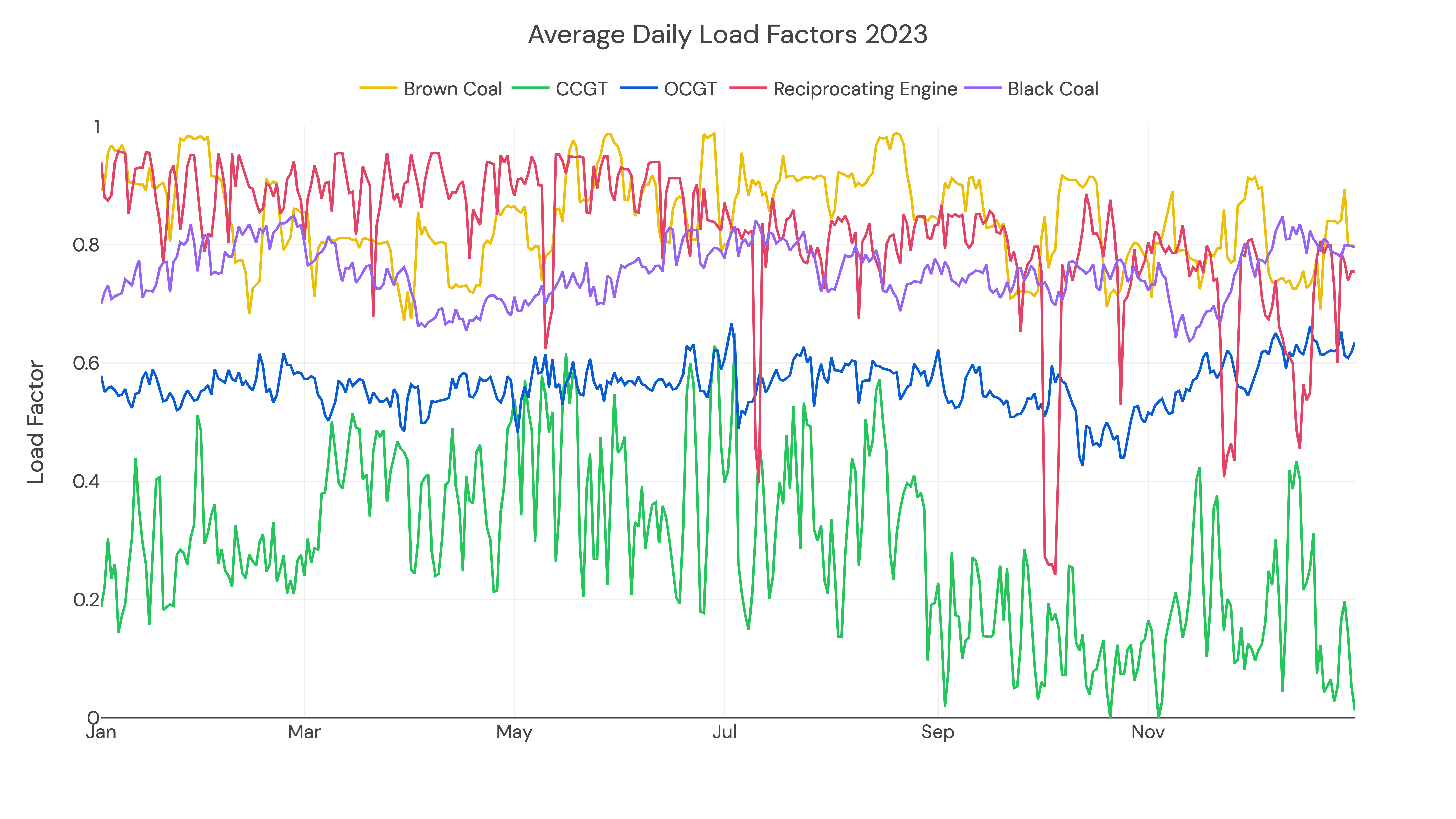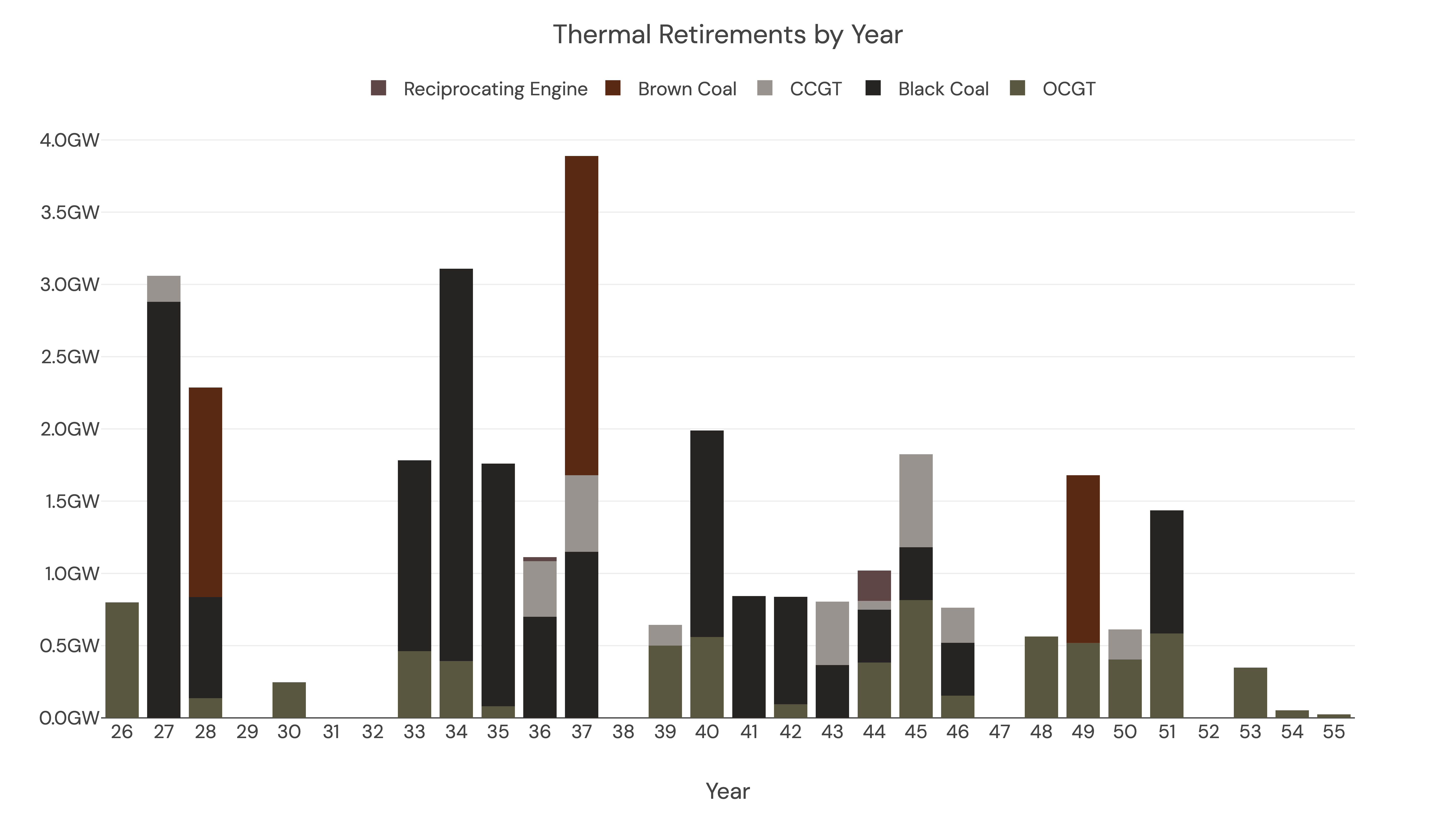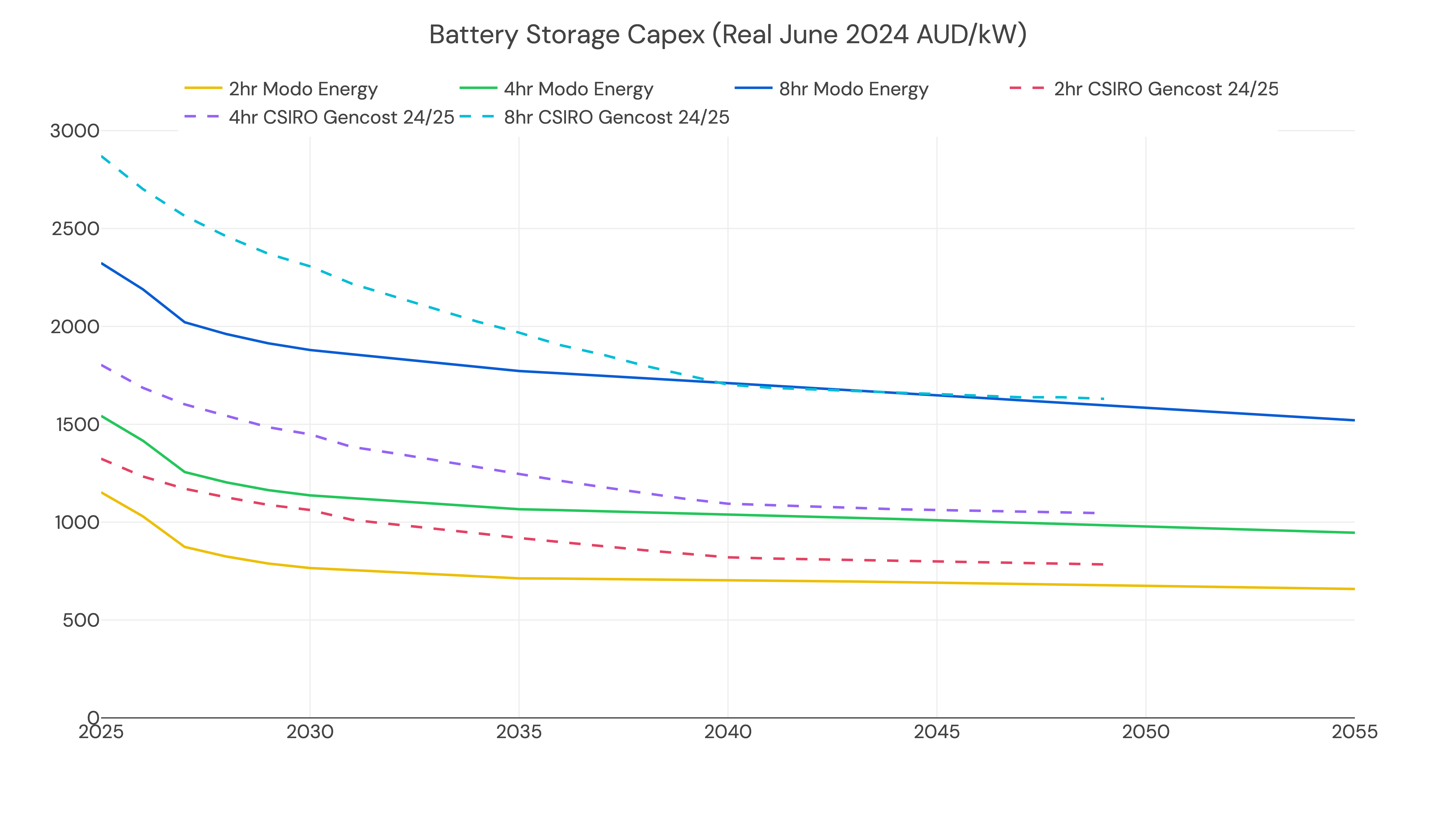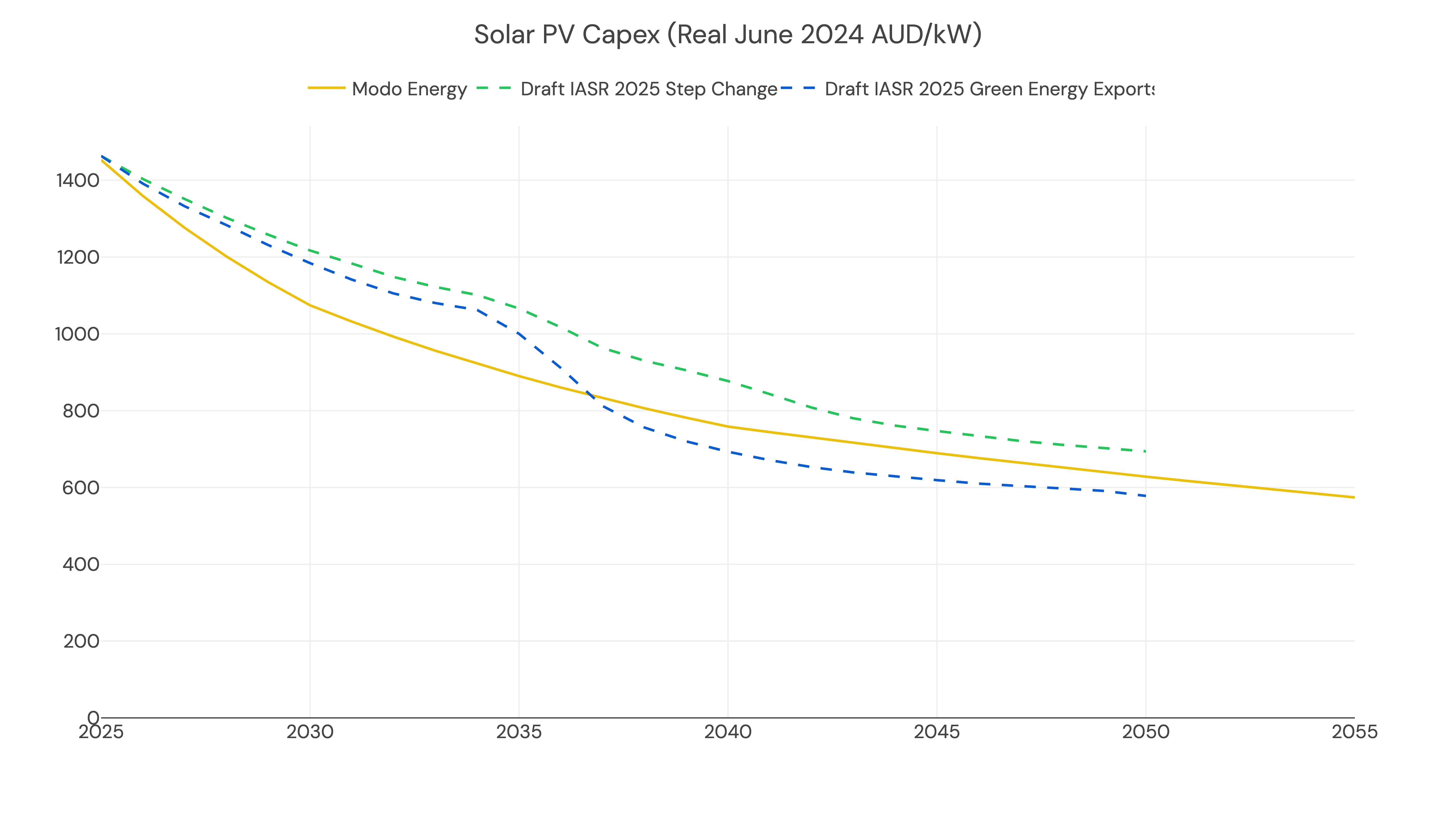Generation
How we model generation capacities and output in the NEM.
Our capacity modelling for the NEM is based on current capacities (from NEM Generation Information), policy assumptions, and our own analysis. Capacity buildout to 2028 is relatively well-defined, with many assets already in the pipeline. For battery storage, we use Modo Energy’s house view on battery pipeline data.
Beyond 2028, we project new generation capacities based on a target 10% internal rate of return (IRR). For example, if a 4 hour BESS built in Victoria in 2031 has an IRR of 4%, we will decrease the capacity built in that year. If an OCGT built in South Queensland in 2040 has an IRR of 20%, we will increase the capacity built in that year. This iterative process ensures that all new plants eventually have an IRR in our target range, closer to 10%.
These IRR projections incorporate the revenues, capex and opex of each potential new build. Using these inputs, we assess build decisions and asset retirements (primarily coal). We allow new build batteries of different durations, as well as Solar PV, Onshore Wind, and OCGTs. Other technologies (e.g. Offshore Wind, Pumped Hydro, Reservoir Hydro) are treated as policy-led and follow a fixed path informed by external scenarios.
Outages
The model calculates load factors to reflect the proportion of a thermal unit’s nameplate capacity expected to be available for dispatch at each interval.
For backtesting, actual availability data is used from AEMO’s DISPATCHLOAD data. For forecasting, outage patterns from a representative historical year (e.g. 2023) are time-shifted to align with the future forecast period.
For new thermal units with no operating history, the model simulates outages by sampling patterns from similar existing plants and applying random time shifts to introduce variation. These patterns are scaled to reflect the capacity of the new units, creating a realistic outage profile rather than simply extending historical averages.
Load factors are then applied to each unit’s nameplate capacity in the thermal supply stack to get the unit's dispatchable capacity.
This approach ensures the dispatch simulation reflects the limited and variable availability of thermal units. Renewable generation, by contrast, is modelled separately using weather-driven profiles that capture resource specific variability. See Renewable Load Factors for more information.

Thermal retirements
We model thermal retirements based on AEMO published expected closure dates for existing thermal plants. In some instances however, we have delayed certain thermal plant retirements up to 2 years based on economics and likely impact on power prices.

Capex
Our assumptions for capex for most technologies are from the AEMO Draft IASR 2025. However, we do take a house view on BESS and Solar PV capex which is based on market research.

Solar PV capex assumptions are based on Modo Energy's component-level research.

Updated 3 days ago
